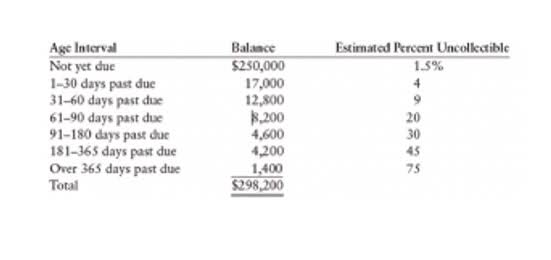
She has extensive experience working with nonprofits in the preparation of their internal financials, getting ready for financial audits, and preparing income tax returns. The changes impact the presentation of your data, so you may not need to change the process for how you track or account for in kind contributions internally. And even if you’re not fully GAAP-compliant currently, implementing these best practices now will save you a lot of cleanup work later in the case you require a financial statement audit. But the deadline for making the changes has passed, and the FINAL deadline (for interim reporting periods) is coming up next month. So now is the perfect time to make sure you report in kind gift donations in compliance with GAAP standards in 2022.

Managing revenue using GAAP for nonprofits

In the United States, these Generally Accepted Accounting Principles (or GAAP) are set by the Financial Accounting Standards Board (FASB). NPOs must adhere to these accounting policies to remain compliant with the law and maintain their tax-exempt status. On January 27, 2025, the Office of Management and Budget (OMB) issued Memorandum M-25-13, adjusting entries requiring federal agencies to temporarily pause obligations and disbursements of federal financial assistance.
BOI Reporting is Still Not Required…For Now
- Understanding the effective date of ASC 842 compliance is crucial for nonprofit organizations.
- If the first and second choice methods are not available, the cooperative can use a risk free interest rate.
- Under current practice, resources may appear to be available for short-term cash needs, but in fact are not available to the organization because of donor-imposed limitations on their use.
- Many of the Orders will have direct impact across various industries including infrastructure, foreign assistance, energy and environmental projects.
- Many nonprofits undergo independent audits to provide an unbiased examination of their financial statements.
- This will not change the amount of equity but will significantly change the debt to equity ratio.
There is increasing awareness that organizations cannot deliver on their missions effectively without the infrastructure and skills to do so, and that overhead costs can come down faster with appropriate technologies driving up efficiency. However, many funders persistently prefer to fund charities with low overhead, and so this accounting change will help nonprofits manage that issue. It is the dilemma that organizations face in building robust infrastructure — including effective data management, communications, program delivery, security, and financial systems — to successfully deliver on their missions. Being able to expense these costs over time in your accounting avoids reporting big IT overhead costs in a single year in the Management and General section on your Form 990 for any particular year. Do keep in mind that software costs and amortization expenses can be allocated across multiple functions (program service, management and general, or gaap accounting for donated assets fundraising).
Not compliant? Don’t Panic! There’s still time.
Cohen & Co Advisory, LLC and its subsidiary entities provide tax, advisory and business consulting services to their clients and are not licensed CPA firms. Internal controls also provide reasonable assurance that things won’t go sideways and mitigates human error or malicious activities. For example, having one person responsible for recording expenditures and another approving the payments ensures that someone continually monitors all financial transactions. Accounting standards for nonprofits are probably not the first thing you think about, but are crucial for your organization to succeed.
- Contributions receivable are presented net of estimated uncollectible amounts and discounted to present value, unless expected to be collected within 12 months.
- Whereby nonprofits must track their funds separately according to unrestricted, temporarily restricted, and permanently restricted categories.
- Hopefully, you can see why it would be important for donors and other interested parties to understand which portion of their revenue and expenses are cash vs. in kind gifts.
- This results in a more useful statement of cash flows and reduction in costs to prepare the financial statements.
- However, we recommend that you get a head start on understanding these rules so that you are prepared to close your books at the end of the year and comply with the new standards.
– Break down how you used in kind contributions in disclosures
The organization would record the receipt of these services in the “statement of activities” with an offsetting expense or capital assets addition, as explained below. More importantly, the new rules replace the current three required classes of net assets (unrestricted, temporarily restricted and permanently restrict) with two new classes, simply those with donor restrictions and those without donor restrictions. Other advantages are the financial statements will now also provide more useful information about the nature, amounts, and types of donor restrictions. Nonprofits will no longer be required to distinguish between temporarily and permanently restricted net assets. Nonprofits will be allowed to provide more useful information about limits placed on net assets by both boards and donors.

Statement of Activities (Income Statement)
To act sincerely and in good faith, your organization needs to honor your commitments to use those funds as the donor or grantmaker intended. Plus, these contributors have the right to sue your nonprofit for misuse of funds if you don’t respect their official wishes—another way GAAP and legal requirements for nonprofits align. Although the primary goal of GAAP—ensuring consistency, comparability, and transparency—has stayed the same over the 100-plus years of its existence, accounting practices have evolved as technology has become more prevalent. So, GAAP has also had to evolve, and multiple organizations in different niches of accounting continue to guide that process to ensure it’s holistic. This provision HVAC Bookkeeping allowed tax-exempt entities to receive a payment equal to the totalvalue of the tax credits for qualifying clean energy projects.


This is referred to as the ‘balance sheet approach,’ and it allows stakeholders to easily see the value of lease payments remaining on any leases. As the lease term progresses, the liability ‘amortizes,’ or slowly decreases in conjunction with the asset. Some of the revenue your nonprofit receives will be restricted, or set aside for specific purposes by the contributor.

